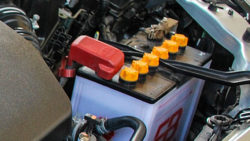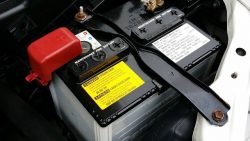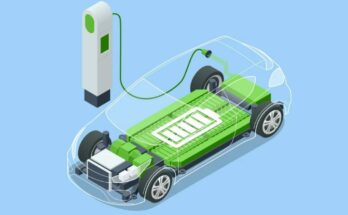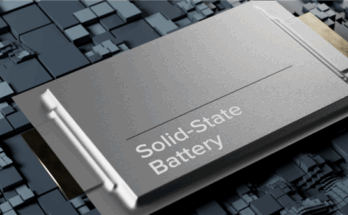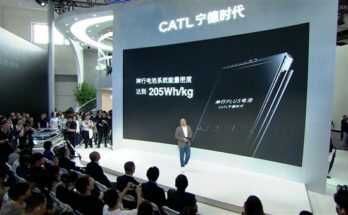A battery is a vital component of any automobile. Your car needs a battery to start its engine, the battery provides the needed power for ignition, electrical lighting, and other car accessories.
Batteries are portable energy supplies, capable of producing electric current from a chemical substance called an electrolyte. There are generally two kinds of batteries available in the market, wet cell and dry cell. While wet cell batteries get their power from a liquid electrolyte, dry cell batteries generate power from a slightly moist paste.
Wet Cell Batteries
A well cell battery generates power from a pair of electrodes and a liquid electrolyte solution. These are comprised of lead plates in a solution of sulfuric acid, hence referred as lead acid batteries also, and are commercially used for over 100 years.
Related: The Correct Way to Jump-Start a Car Battery
Wet cell batteries are commonly available and are cheap too. You are however required to maintain the liquid electrolyte to the recommended level as insufficient electrolyte level results in reduced performance and the battery will need to be recharged. Constant care must be taken with wet cell batteries to avoid acid spills. Also the battery vent plugs (caps) need to be tightly closed to avoid acid evaporation.
Wet cell batteries, although heavier, are the most widely used. They are the workhorse of the battery world and the cheapest for equal power.
Dry Cell Batteries
A dry cell uses a paste electrolyte, with only enough moisture to allow the current to flow. These days most automobiles come equipped with dry cell batteries as they are considered environment friendly. Since no acid fumes comes out from them, and furthermore there is no threat of leaking or spilled acid (liquid).
Related: Guide: Maintaining Your Car Battery
Often referred to as maintenance-free batteries, you don’t need to check & maintain the electrolyte level in dry cell batteries. They are relatively lighter in weight but are slightly expensive than the wet cell batteries.
Below is a brief comparison the two types of batteries:
| Wet Cell Battery | Dry Cell Battery | |
| Electrolyte | Liquid electrolyte | Paste electrolyte |
| Directional Usage | Typically can be used only in upright direction. Other orientations may result in acid spilling | Can be operated in any orientation without spilling |
| Emission | Can produce gases that are harmful to health. | Typically does not emit gases |
| Weight | Heavier | Relatively lighter |
| Maintenance | Electrolyte level needs to be periodically checked & maintained | No regular maintenance required |
| Resistance to cold | Lesser resistance to cold weather | Greater resistance to cold weather |
| Cost | Inexpensive | Slightly Expensive |
No matter which battery you opt for, it need some sort of care. Although in case of dry cells you don’t need to check & maintain the electrolyte level, but you do have to make sure that the charging system of your car is working efficiently. Remember, overcharging can damage a battery as much as undercharging.
Related: Advantages of Electric Vehicles
Always use a battery that’s rated at least as high as the one originally specified by the vehicle manufacturer, refer to owner’s manual. Keep the top of the battery clean. Since dirt becomes a conductor, it drains down the battery power. Further, if corrosion accumulates on battery terminals, it becomes an insulator, which slows down the flow of current.
Also note that vehicles need to be driven regularly and for distances that allow the battery to recharge itself properly or it will discharge its power and run flat. In fact, regular longer runs could double the life of your battery.
For a complete guide on how to maintain your car battery, read our earlier post here.

A computer animation professional with over 23 years of industry experience having served in leading organizations, TV channels & production facilities in Pakistan. An avid car enthusiast and petrolhead with an affection to deliver quality content to help shape opinions. Formerly written for PakWheels as well as major publications including Dawn. Founder of CarSpiritPK.com



